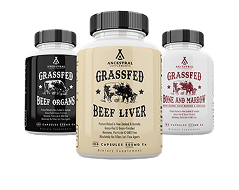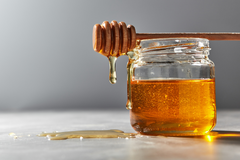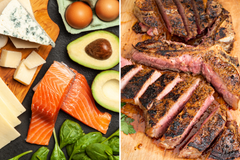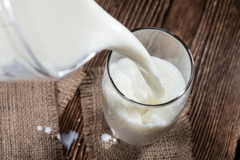Carnivore Diet Flu: What It Is and How to Alleviate It

Feeling wiped out, getting headaches, or just being plain irritable on a carnivore diet? Sounds like you’re going through what’s known as the carnivore diet flu. The carnivore diet flu is similar to the keto flu experienced by those on a keto diet.
But don’t stress—we’ve got you covered. When you cut out carbs and switch to a diet of all animal-based foods, your body needs a little time to adjust.
In this article, we’ll explain what the carnivore flu is, why it happens, and give you simple remedies to get through it. Let’s get you feeling back on track so you can keep crushing your health goals!
Key Takeaways:
- Carnivore flu is what some people experience when they switch to a carnivore diet, caused by the body adjusting from burning carbs to burning fats.
- Symptoms like fatigue, headaches, and irritability are part of this adjustment and are usually temporary.
- Simple remedies like staying hydrated, managing electrolytes, and eating plenty of animal fats can ease the symptoms.
- Monitoring calorie intake is important to meet energy requirements while on the carnivore diet.
- Nutrient deficiencies can be managed by focusing on nutrient-dense foods.
What Is the Carnivore Diet Flu?
So, what exactly is carnivore flu? When you switch to a diet that’s all about animal-based foods (meats, fats, and organs), your body begins burning fat instead of carbohydrates for energy. This change in metabolic state can leave you feeling pretty lousy for a bit, with symptoms that are similar to the flu. It’s the same idea as the keto flu that some people experience on the ketogenic diet, but it can be a bit more intense since the carnivore diet cuts out all carbs.
Reducing carb intake leads to the body relying on fat for fuel, which may result in symptoms commonly referred to as keto flu. This adjustment is temporary—it’s just your body adapting to the new fuel source. Think of it like your body recalibrating to run on high-octane fuel (fat) instead of regular gas (carbs). Yes, it can be uncomfortable at first, but don’t worry; once you push through, most people feel better than ever.
Carnivore Diet Flu Symptoms
The most common symptoms of carnivore flu include:
- Fatigue
- Headaches
- Irritability or mood swings
- Muscle cramps or body aches
- Brain fog
- Nausea
- Digestive issues like constipation
These symptoms occur as the body burns fat through ketosis, a metabolic state achieved by low-carb diets such as the carnivore diet.
While these symptoms are no fun, they’re a sign that your body is adjusting to burning fat for fuel instead of carbs. It’s a bit like the “detox” stage—things feel rough before they get better! Imagine it as your body going through a boot camp; it’s tough, but it’s all about building resilience and strength. The headaches, fatigue, and mood swings are your body’s way of saying, “Hey, I’m working hard to switch gears here!”
Once you push through this phase, you’ll likely find yourself with more energy, mental clarity, and overall well-being. So, hang in there. Better days are just around the corner!
What Causes Carnivore Flu?
The main culprit here is carb withdrawal. Your body has been used to running on carbohydrates, and when you suddenly remove them, it has to switch gears and start using fats (ketones) for energy. That process is called ketosis, and while it’s super efficient in the long run, the transition can make you feel pretty crummy. A low-carb diet can help stabilize blood sugar and insulin levels, but it also requires careful management of hydration and electrolytes to prevent issues like the keto flu.
Another factor is electrolyte imbalance. Carbs help your body retain water and electrolytes like sodium, potassium, and magnesium. When you cut carbs, you also lose a lot of these electrolytes, which can lead to those muscle cramps, headaches, and fatigue. The carnivore diet can significantly impact metabolic health, particularly for individuals managing chronic diseases and athletes, by enhancing insulin sensitivity, improving glucose control, and reducing inflammation.
Remedies for the Carnivore Flu
Transitioning to a carnivore diet can be a bit of a rollercoaster, but with a well-thought-out plan, you can make the ride much smoother. Here are some tips to help you manage the switch and minimize those pesky carnivore flu symptoms:
- Gradual Reduction of Carbohydrate Intake: Instead of cutting out carbs cold turkey, try reducing your carbohydrate intake gradually over a few days or weeks. This slow transition can help your body adjust to the new energy source and reduce the risk of experiencing severe carnivore flu symptoms.
- Increase Fat Intake: As you cut back on carbs, make sure to increase your intake of animal fats. These fats are crucial for providing the calories your body needs. Think fatty cuts of meat, poultry, and fish. Not only will this help you feel full, but it will also give your body the fuel it needs to start burning fat efficiently.
- Stay Hydrated: Hydration is key! Drink plenty of water throughout the day, and consider boosting your electrolyte intake to prevent dehydration and maintain electrolyte balance. Adding a pinch of salt to your water or sipping on bone broth can work wonders.
- Support Your Digestive System: The carnivore diet is high in protein and fat, which can be a bit tough on your digestive system at first. Consider adding digestive enzymes or probiotics to your routine to support your digestive health and ease the transition.
- Maximize Nutrient Intake: Focus on whole, nutrient-dense foods like meat, poultry, fish, and eggs. Avoid processed meats and opt for grass-fed, pasture-raised options whenever possible. This will help you maximize nutrient intake and support overall health.
- Be Mindful of Blood Sugar: The carnivore diet can help regulate blood sugar levels, but it’s essential to keep an eye on them, especially if you have diabetes or are prone to blood sugar imbalances. Regular monitoring can help you stay on track and make necessary adjustments.
- Eat more animal fats: This diet is all about fats! Fatty cuts of meat, bone marrow, organ meats, and even butter can give your body the nutrients it needs to adapt to this new way of eating. Plus, fats are super filling and can help you feel more satisfied and energized. Monitoring your calorie intake is also crucial to meet energy requirements while adhering to the carnivore diet.
- Don’t forget about organ meats: Organ meats, like liver and kidney, are rich in essential vitamins and minerals.
- Give yourself time: Your body needs time to adjust. These symptoms usually last a week or two before your body fully shifts into fat-burning mode. Be patient, and don’t forget to take it easy during this period.
- Listen to Your Body: If you experience persistent or severe carnivore diet flu symptoms, it might be time to adjust your diet or seek support from a healthcare professional. Your body knows best, so pay attention to what it’s telling you.
By following these tips, you can minimize the risk of carnivore diet flu symptoms and help ensure a successful transition to a carnivore diet.
Comparison to the Keto Flu
The carnivore diet flu is often compared to the keto flu, as both diets involve a significant reduction in carbohydrate intake. However, there are some key differences between the two.
The keto flu is typically associated with a ketogenic diet, which involves a moderate protein intake and a high fat intake. In contrast, the carnivore diet is characterized by a high protein intake and a moderate fat intake.
While both diets can cause flu-like symptoms, the carnivore diet flu is often reported to be more severe due to the sudden and drastic reduction in carbohydrate intake. However, with proper planning and attention to detail, it’s possible to mitigate side effects and thrive on a carnivore diet.In terms of symptoms, both the keto flu and the carnivore diet flu can cause fatigue, headaches, and muscle cramps. However, the carnivore diet flu may also cause more severe symptoms, such as nausea and diarrhea, due to the sudden change in digestive system function.
Overall, while there are similarities between the keto flu and the carnivore diet flu, it’s essential to understand the unique challenges and opportunities associated with each diet. By being aware of the potential side effects and taking steps to mitigate them, you can set yourself up for success on a carnivore diet.
Conclusion
Carnivore flu might feel rough, but it’s a normal part of transitioning to a carnivore diet. The good news is, once you’re through it, most people feel amazing on this way of eating—more energy, better digestion, and clearer thinking.
Remember to stay hydrated, manage your electrolytes, and eat plenty of nutrient-dense animal fats. Before you know it, your body will likely adapt, and you’ll be thriving on your carnivore diet.



















